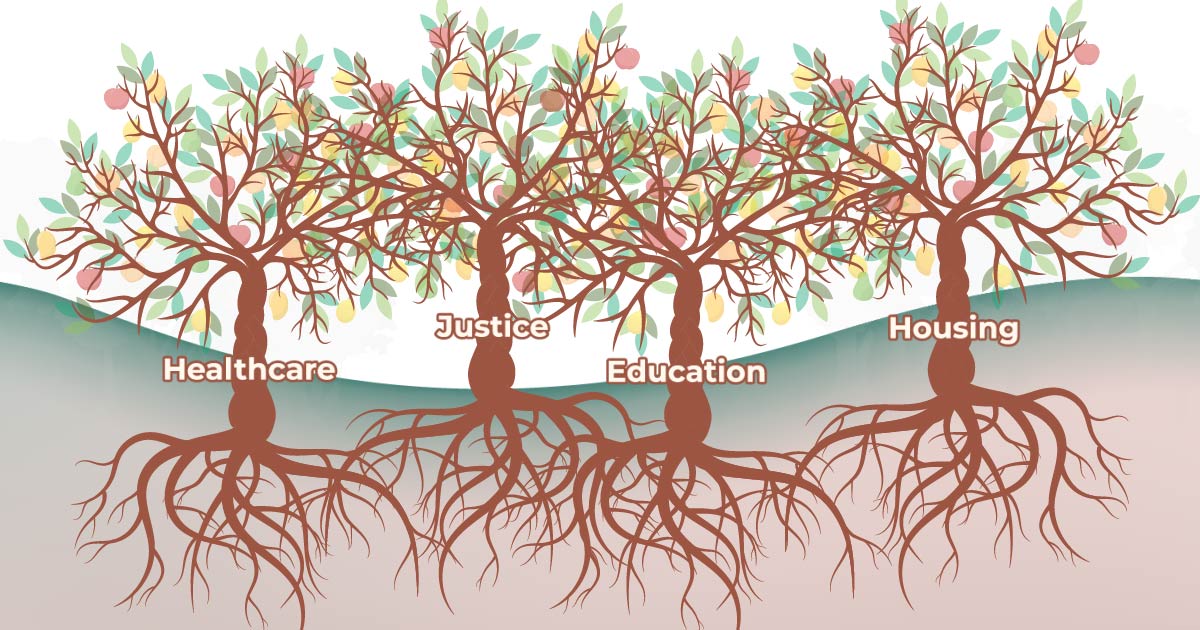Greater national and global attention to racial equity and historical root causes of inequities has reinvigorated our commitment to addressing pressing social problems and shaping a more equitable and just society. By centering equity, we can address long-standing wrongs, creating a more fair society. Yet to address these wrongs, we cannot just focus on outcomes. To truly create change, we need to address all levels of inequity. We need a clear understanding of not only what we are trying to improve, but what mechanisms that can drive change even as different areas of social concern may have different ways of defining change and what we hope to accomplish. Moreover, we need a common language and framework of understanding.
At Mathematica, we’ve adopted this definition of equity to help guide our efforts.
Equity is about fairness and justice. It is about taking deliberate actions to remove systemic, group, and individual barriers that hinder opportunities and disrupt well-being. Equity is achieved by identifying and eliminating policies, practices, attitudes, and cultural messages that create and reinforce unfair outcomes.
This is adapted from the 2021 Global Diversity, Equity & Inclusion Benchmarks Standards for Organizations Around the World and complements many other definitions advanced by institutions such as the federal government, foundations, and equity leaders.
Notably, we distinguish equity from equality. Although both promote fairness, equality focuses on treating everyone the same, regardless of need and circumstances. Equity is a focus on working with people differently depending on need, circumstance, and consideration of historical and systemic inequities.
Seeing the forest through the trees
If this definition of equity is at the core of our vision, how do we get there? First, we need to accept that understanding and addressing inequity at multiple levels is necessary. Our colleagues previously introduced a framework for advancing health equity, but the lessons are universal.
Their framework begins with key equity concepts, broadly applicable across issues of social welfare, through the visualization of a tree, where the roots represent root causes (structural determinants), the trunk represents social factors, the branches and leaves represent institutional factors, and the fruit symbolizes well-being and key outcomes of people and communities.
Understanding that these roots are embedded in soil that contains cultural racism and oppression, our colleagues expanded their framework to look at the important role that intersectionality plays in shaping inequality, and how understanding intersectionality is necessary to truly promote equity.
Although their work centered on health equity, we believe there is value in using the same lens to zoom out, recognizing the varied systems, institutions, and outcomes that comprise our society as a deeply interconnected forest of trees, grounded in shared structural, historical, and systemic roots that ultimately result in the fruits of individual well-being. We can see the interconnected nature of our systems and the ways in which structural root causes, as shown by the complex intertwining root system, can contribute to poor outcomes across multiple systems such as health and education.

Once we have a view of both the forest and the trees, it becomes clear that advancing equity in any one area requires examining and addressing factors that affect all social systems, across education, justice, housing, health, employment, and more.
When considering connected social systems such as education, justice, employment, or health, many of the same structural and social factors are relevant to institutions and individual outcomes. For example, structural factors such as school segregation and the U.S. history of enslavement of Black and Indigenous peoples manifest in racialized mass incarceration, Head Start enrollment, and labor market disparities.
Just as the roots of aspen groves in Colorado are so intertwined that they have become one living organism, the structural root causes of our forest—and inequities across social issues—are inextricably linked. As we prioritize tackling structural and systemic issues, strengthening the trunk and branches through equitable resource distribution, power-sharing, and community ownership can build the foundation for improved outcomes. This framework helps us collectively build the understanding needed to take action to advance equity and eliminate inequities.




